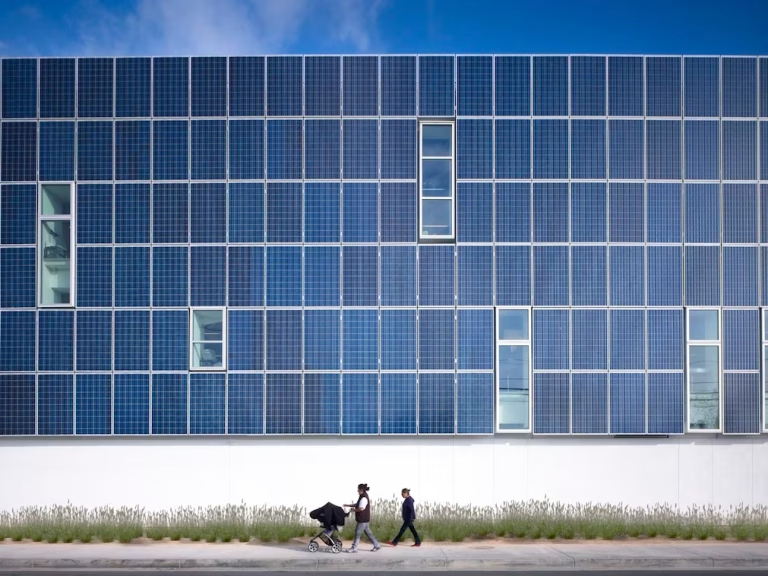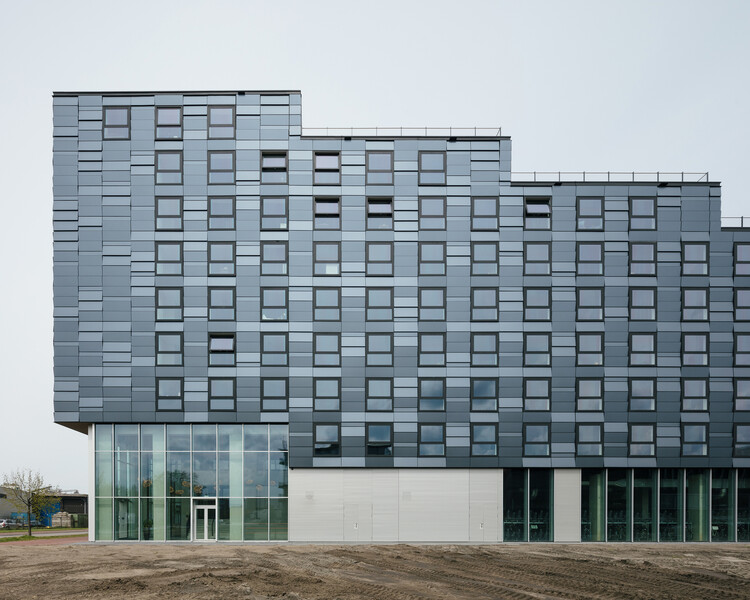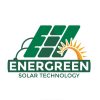Solar Facade: The Future of Energy-Efficient Architecture
In today’s world, the demand for sustainable and energy-efficient building solutions is rising faster than ever. Among the most innovative technologies shaping modern architecture, the solar facade stands out as a perfect blend of functionality, design, and sustainability.
What is a Solar Facade?
A solar facade is an architectural feature where photovoltaic (PV) modules are integrated directly into the exterior of a building—covering walls, curtain glass, or cladding systems. Unlike rooftop solar systems, facades utilize vertical or tilted surfaces, turning unused building exteriors into powerful sources of clean electricity.
A solar facade is a building exterior that incorporates solar photovoltaic (PV) panels directly into its design, transforming ordinary walls into active power-generating surfaces. Unlike traditional solar systems that are mounted only on rooftops, solar facades utilize vertical spaces such as curtain walls, cladding, or glass panels, making the entire building an energy-producing structure. These facades can be made with opaque panels, semi-transparent solar glass, or even customized colored modules to match architectural aesthetics. In addition to generating clean electricity, solar facades act as an outer protective layer for the building, offering insulation, shading, and weather resistance, all while contributing to a modern, stylish appearance. This integration of technology and architecture positions solar facades as a cornerstone of Building-Integrated Photovoltaics (BIPV), where design and sustainability work hand in hand.

Key Benefits of Solar Facade
Dual Purpose – Energy & Design
A solar facade not only generates renewable energy but also enhances the visual appeal of a building. With options like colored, patterned, or transparent PV panels, architects can design modern facades without compromising aesthetics.Efficient Use of Space
In dense urban environments, rooftop areas are often limited. A solar facade maximizes energy generation by transforming vertical surfaces into active power producers.Thermal Insulation & Shading
Solar facades act as an additional protective layer, reducing heat gain in summer and retaining warmth in winter. This lowers HVAC costs and improves indoor comfort.Durability & Low Maintenance
Built with strong, weather-resistant materials, solar facades serve as both cladding and energy systems. They require minimal maintenance and have a long operational life.Sustainability & Green Certification
Buildings equipped with solar facades can significantly reduce their carbon footprint and achieve certifications like LEED, BREEAM, or EDGE, enhancing their market value.
Types of Solar Facade Systems
Opaque PV Panels: Replace traditional cladding materials while producing electricity.
Semi-Transparent PV Glass: Used in curtain walls, skylights, and windows for natural light with energy generation.
Customized Colored Panels: Available in wood, stone, or designer finishes to match architectural styles

Applications
Commercial High-Rises – Modern office towers use solar facades for sustainable branding and energy cost savings.
Residential Apartments – Eco-friendly housing projects integrate them for both design and energy independence.
Public Buildings – Universities, hospitals, and government facilities adopt solar facades to showcase commitment to sustainability.
The Future of Building-Integrated Solar
Solar facades represent the next step toward net-zero energy buildings (NZEBs). As technology advances, efficiency levels continue to rise, while customization options make them more attractive for architects and developers. In the coming years, solar facades will become a standard feature in modern construction, where every wall is not just a barrier, but a generator of clean power.
